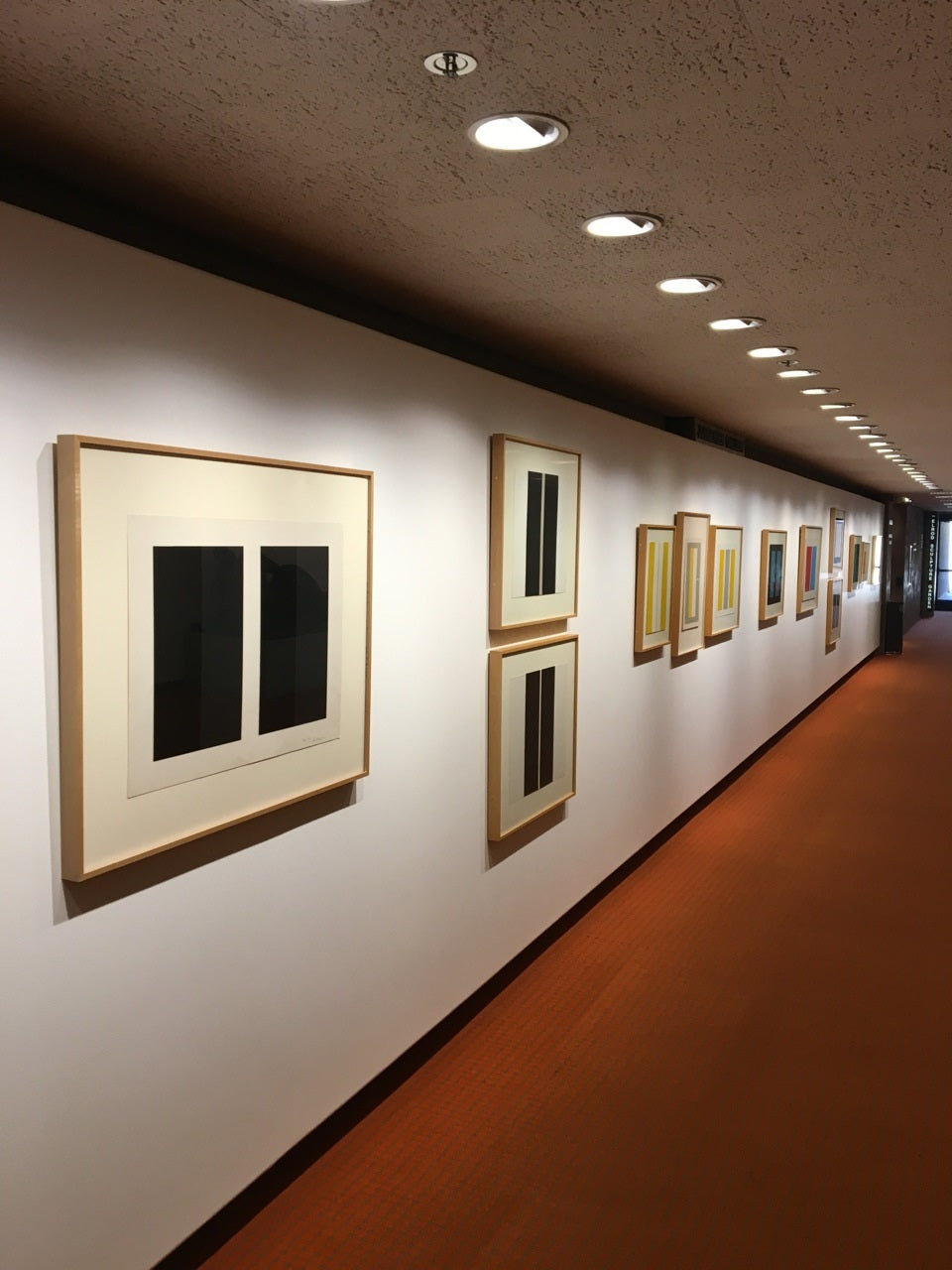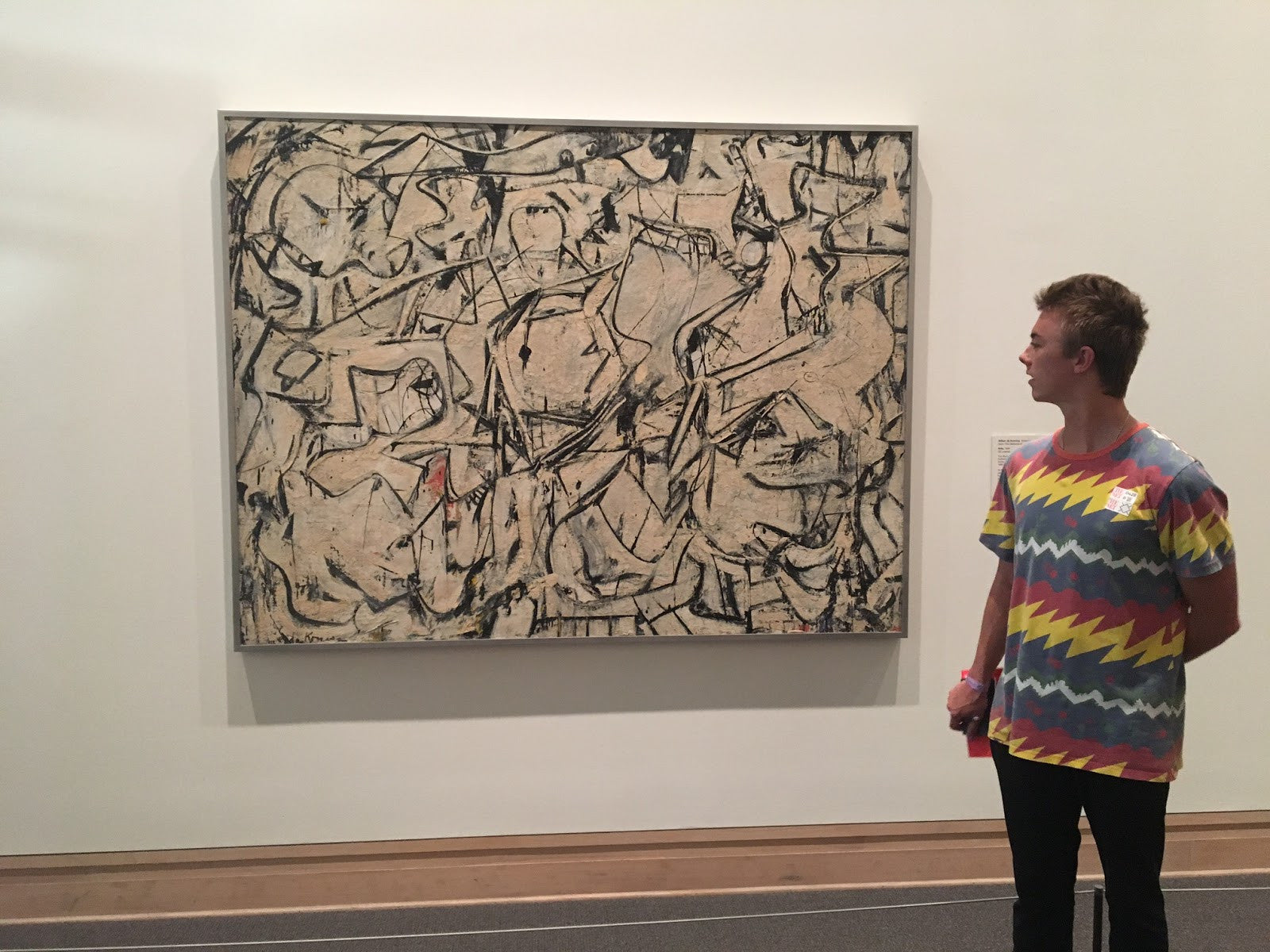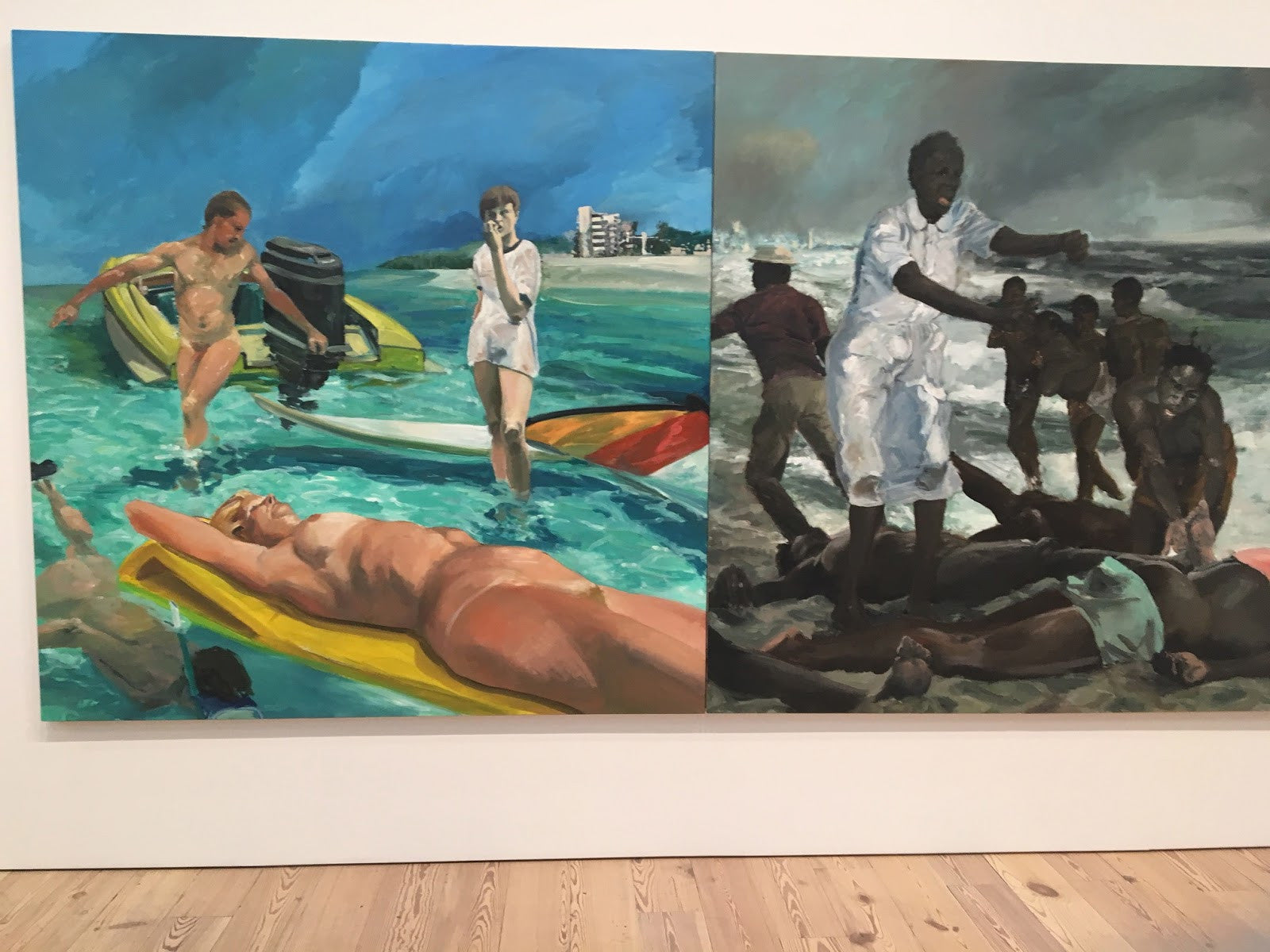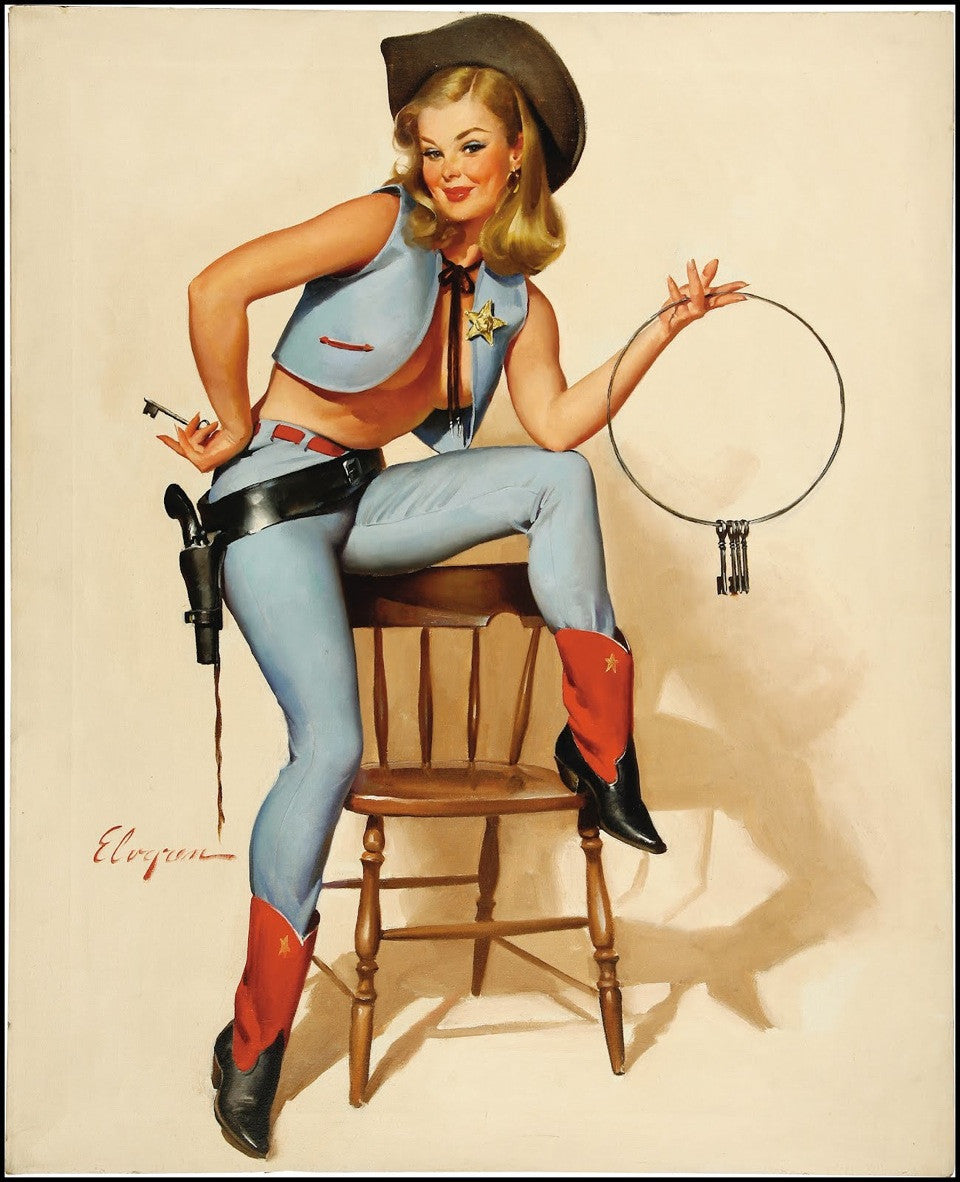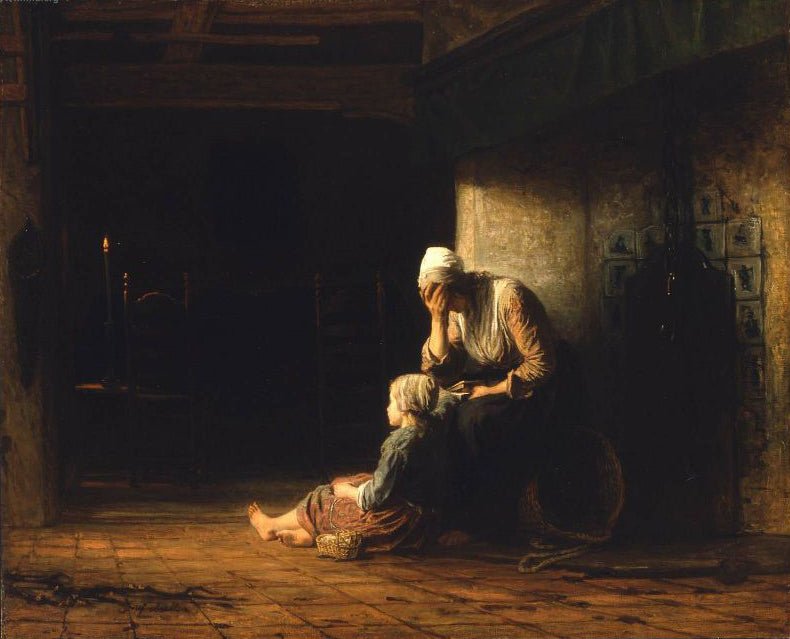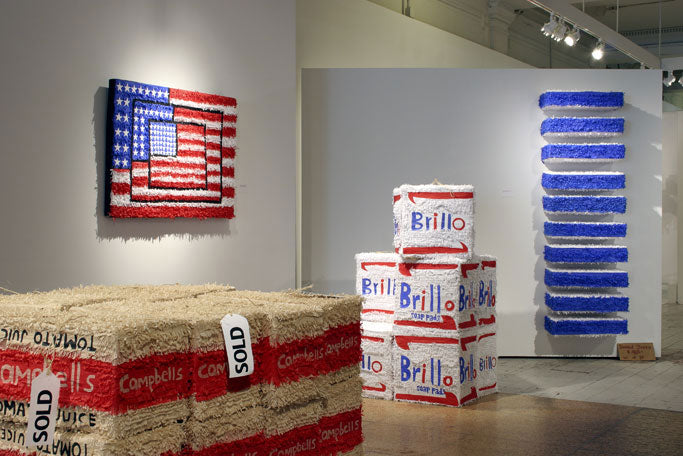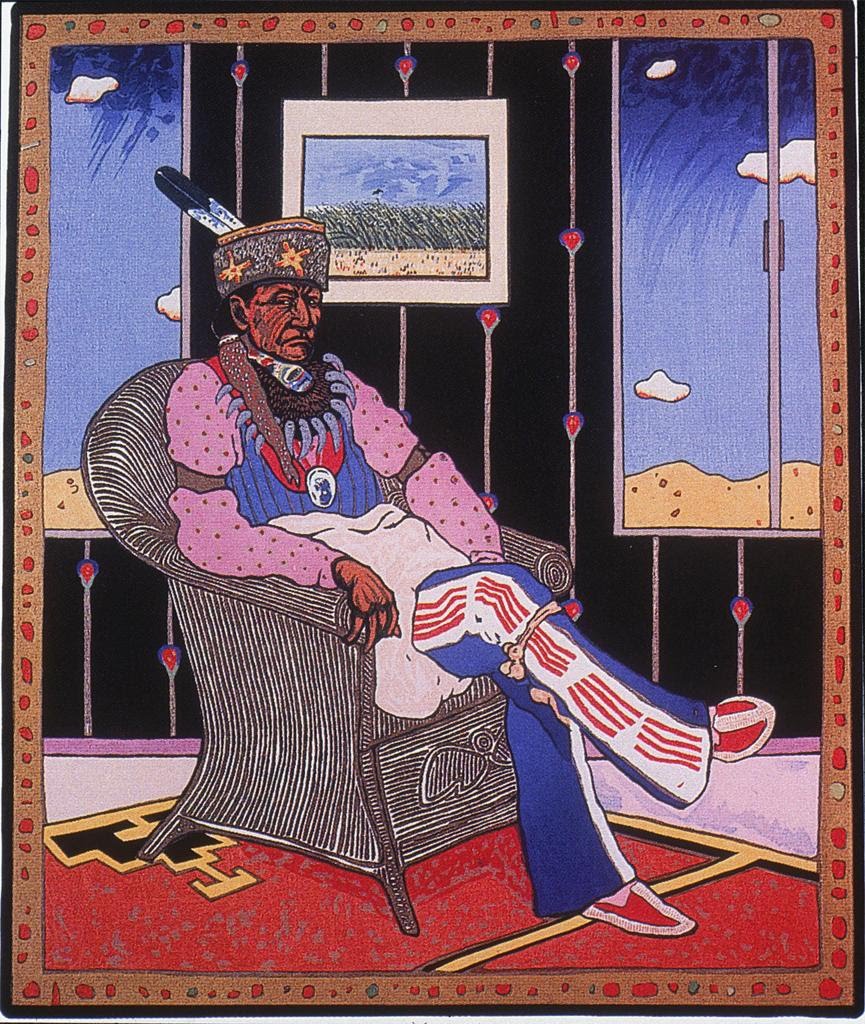
By Christian Franzen
This past weekend I went out to Palm Springs to see Mirage by Doug Aiken. Unfortunately, upon my arrival I found out that it was closed temporarily due to permit issues with the city. Finding myself in Palm Springs with nothing to do, naturally I visited the Palm Springs Art Museum. With it being a small city museum I didn't have huge expectations for what I’d find there. To my surprise the museum was amazing. Their permanent collection is an exciting mix of modern paintings from the likes of Frankenthaler, Kline, Motherwell mixed with a good variety of classic California landscape painters ala Moran and Wendt with a few Matisse’s mixed in. They also have an impressive collection of Native North American Baskets which I personally am very into.
The museum has four levels. They had a great show of contemporary artists on the top floor. In this show there is a great piece by Los Angeles artist Gisela Colon. It is one of her Glo-pod series works that is truly breathtaking to see in person. The Glo-pod sits up on the wall bulging out from the wall into the viewer's space. The Glo-pod illuminates from the inside and the colors of the pod shift depending on your position in the room. I had always wanted to see one in person so it was a big treat for me to find one here.
In my opinion the best thing in the Museum right now is the John McLaughlin Tamarind Prints on the bottom floor. This is a terrific collection of prints by the California artist that he made in the Tamarind Lithography Workshop in Los Angeles between 1962 and 1963. I’m a huge fan of McLaughlin, go West Coast Minimalism! It was really cool to see the prints because they have a totally different feel than the paintings he was making at this time, despite their similarities. The paintings are still very minimal geometric compositions but they still have a real human touch to them. The lines aren’t taped and the paint varies over the surface. So they are minimal, but they still have a human quality about them. The prints are essentially the same compositions of the paintings. They differ though in that they are done with the equipment of the Lithography workshop so they don’t have that same painterly human touch. The maker feels somewhat removed when you look at the work. This really makes you focus and appreciate McLaughlin’s compositions and notion of space.
So if you’re going to be in Palm Springs anytime soon I would recommend stopping by their Art Museum if you got some time to kill. You can escape the heat for a bit and there is a lot of great stuff to see.
